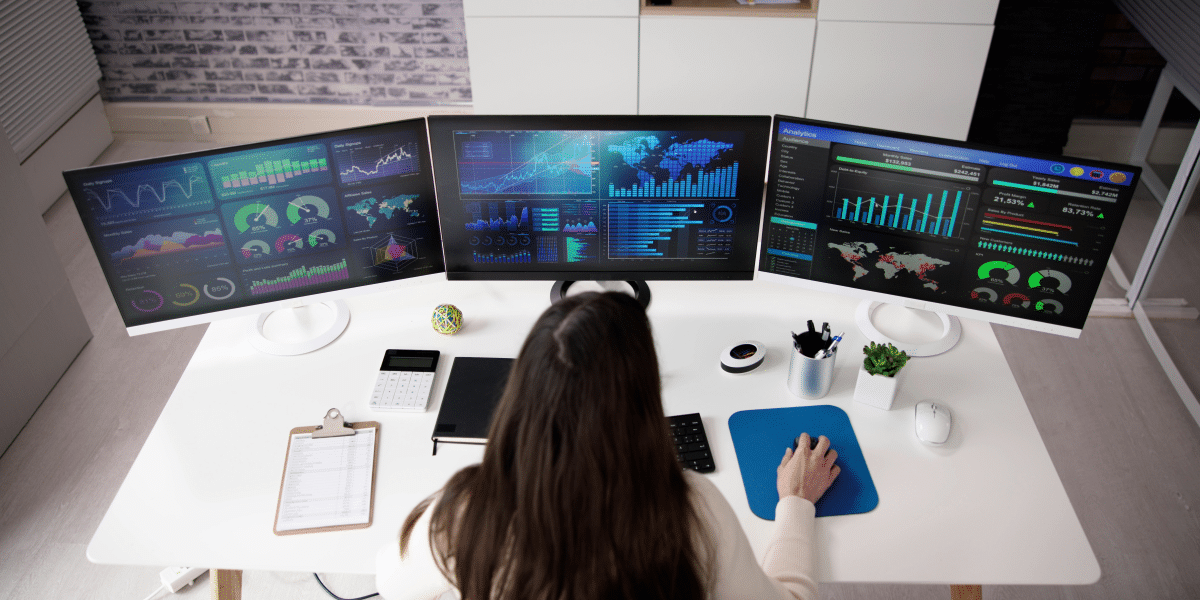Tax season is here, and many people are considering how best to use their tax refunds. For some, purchasing a vehicle may be a tempting option and is normally an ample percentage of where tax refunds go. But what should you consider before taking the plunge?
In 2022, we saw record-high inflation and interest rates in the auto industry, both for used and new vehicles. The combination of record-high inflation and finance rates drove consumer demand significantly downward as vehicle ownership costs were out of their comfort zone.
On a positive note, new vehicle supply started to catch up to pre-COVID levels, with manufacturers willing to sell at MSRP or below. This marked a significant turning point vs. 2021, where ultra-high demand combined with scarce inventory sent new and used vehicle values skyrocketing with little to no discount to the consumer.
When deciding whether to utilize found money, such as a tax refund, it’s essential to consider how to get the best return for your dollars. Considering the timing and economic climate in the wake of the pandemic should be a top consideration for buyers. However, it is important for the consumer to understand that while interest rates are much higher than a decade ago, these rates actually fall close in line with pre-recession levels all the way back a few decades.
It certainly is sticker shock as rates for not just cars but houses and general loan instruments were practically close to zero post-2008 recession. Should everyone accept this return to normalcy? Should one wait for interest rates to go back to post-recession levels? Will they ever go back to those levels? It is up to each consumer to decide what is best for them. Hopefully, our opinions below will help shape that decision.
How do car values change with the seasons?
Car prices are determined by various factors, but the season is the most influential.
Whether you are selling or buying a new or used vehicle, the time of year (or month) can have a positive or negative impact on your pursuit. During the “tax time” months (Feb-April), when refunds are piling in, there is a spike in demand for all vehicles. Dealers and manufacturers are releasing prime incentives on new inventory and are willing to pay up a little more for trade-ins to lock in the retail deal. In addition, dealers are stocking up ahead of the rush with fresh inventory to sell, which causes a small spike in used vehicle values. These months may have the most consumer demand but do not necessarily guarantee this period of time is optimal for selling and/or buying a car.
As summer approaches, consumer demand tends to drop as behaviors shift from purchase-focused to vacation-focused as tax refund money tends to dry up. Therefore, consumer demand lowers, and supply rises at an ample level. Demand/offers for trade-ins decreases moderately, BUT dealers sometimes become more willing to offer steeper discounts on inventory to maintain their sale performance levels. What this means is you may not get the best offer from a dealer for your car but snag a better price on the car you wish to buy.
So what time of the year is best? From the above, there really isn’t a best time or best-case scenario. It is more like an equilibrium effect with your personal trade and purchase goals determining to sell/buy at a market peak or market drop. There are pros and cons to both seasons, but the increase or decline in vehicle values is not significant. Simply put, not a huge “missing out” moment in any season.
At the end of the day, it’s essential to do your research and compare prices at different times of the year to ensure you get the best deal. Car values change with the seasons, so be sure to keep that in mind when making your purchase.
What is the current economic climate like for purchasing a car?
The economic climate for purchasing a car is currently in flux. With loan rates at all-time lows during the pandemic and scarce supply that drove ultra-high demand and vehicle prices right with it, vehicles entered a significant bubble that lasted through 2021 and early 2022. But what goes up must come down!
As inflation and loan rates started to rise in early 2022, consumer demand significantly decreased and car prices started to come down in line with it.
New car prices have been slow to adjust to this new normal, leaving them largely unchanged from their pre-pandemic highs. Used cars, however, have seen more of a more significant adjustment, with prices coming down closer to more normal pre-pandemic levels. It is important to note used vehicle values have NOT dropped 40% from their standard value. That would simply be catastrophic. They have, in fact, dropped over 40% from their inflated value over the past year. They are coming back to normal and resuming what they always have been, a depreciating asset.
As a result, used cars will continue to be a more budget-friendly option but at a higher interest rate if financed. However, new vehicle supply will continue to normalize deeper into 2023 with more favorable financing options and rebates that will help ease the rising cost of their average MSRP. It is really up to you and what you are comfortable with paying that will determine if a used or new option fits.
What is the future outlook for the car industry?
The future outlook for the car industry is uncertain but promising. Over the last year, the significant increase in used car prices was not sustainable and was partly driven by buyers overpaying for the limited supply of used vehicles.
As new car inventories start to increase, there could be more declines in used car prices in the months ahead. Late-model used cars will likely be in short supply due to reduced new car production over the last three years, meaning that the value of trade-ins could be a headwind on car prices by reducing what buyers can pay.
Overall, this industry is incredibly resilient and has been shown to correct its volatility much faster than other industries. Remember when we said what goes up must come down? We are almost there now, and that will bring some relief to the consumer. Heading back to normalcy will ensure fair deals are made on trade-ins and better deals made on the purchase without the insanity or “FOMO” moments of 2021, where a consumer car deal (trade+purchase) was heavily lopsided and unfavorable.
The author
Roger Clappe is a 15-year senior leader in the automotive industry with deep expertise in automotive eCommerce, retail, wholesale, and emerging technology. Roger’s experience was instrumental in building companies from the ground up, such as TradeRev (a part of KAR Global: KAR-NYSE), Webuyanycar, and WhipFlip, which he now heads as Founder & CEO.








